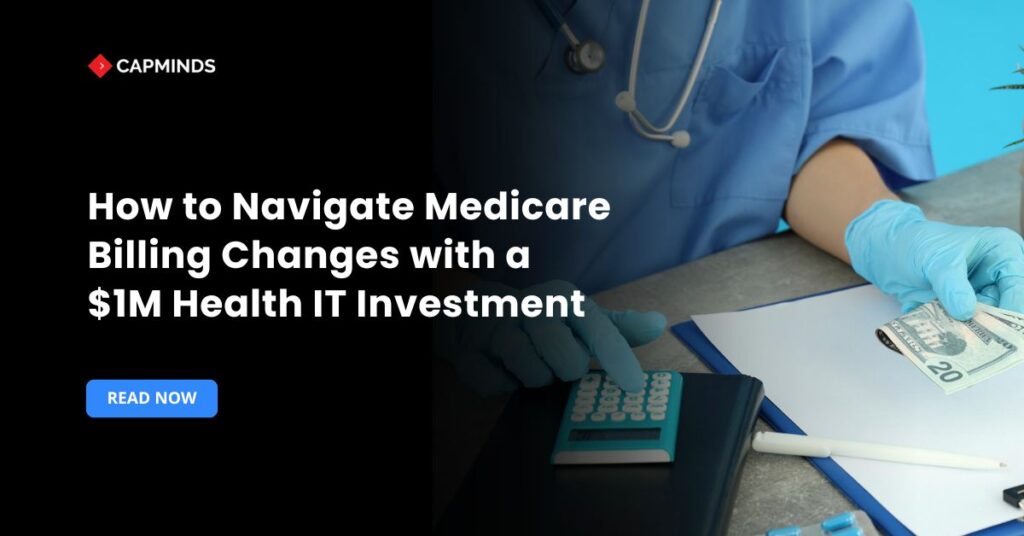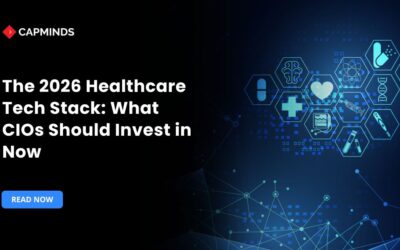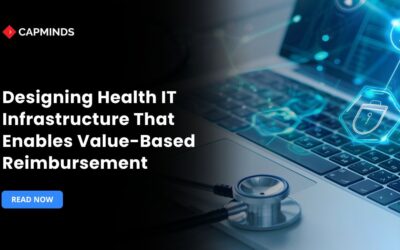How to Navigate Medicare Billing Changes with a $1M Health IT Investment
Medicare covers about 67 million Americans. Over 20% of the U.S. population, and nearly 25% of all physician/clinical spending. Any payment or coding change can, therefore, dramatically impact hospital and practice finances. For 2025, CMS trimmed the Medicare Physician Fee Schedule conversion factor to $32.35 (a ~2.83% cut), resulting in an average 2.93% reduction in physician payments.
At the same time, CMS added new billing codes – for example, the long-awaited G2211 add-on code for complex E/M visits (effective 2024), and new G-codes for caregiver training and behavioral health safety planning (G0560) in 2025.
Key telehealth flexibilities have been extended through Sept. 2025, but face expiration beyond that. In parallel, Medicare’s value-based programs are accelerating: 2024 introduced 16 MIPS Value Pathways (MVPs) and more cost/quality measures, and Accountable Care Organizations must shift from web-based quality reporting to electronic CQMs via CMS’s APM Performance Pathway.
Collectively, these trends create both risk and opportunity. Payment rates are under downward pressure, and the billing landscape is more complex, raising the chance of denials or compliance audits.
Providers must also collect more patient-responsibility revenue as out-of-pocket costs rise. The right IT investments can offset these pressures. Below, we outline the biggest Medicare billing changes and how a strategic ~$1M health IT investment can address them.
Biggest Medicare Billing Changes in 2025
- Fee Schedule Cuts: CMS finalized a ~2.9% cut to 2025 physician payments. These cuts were only partly reversed by Congress, meaning practices will face tighter margins.
- New Billing Codes: CMS and CPT have added “add-on” codes to boost reimbursements for complex care. For example, G2211 will finally be paid in 2024. In 2025, CMS rolled out caregiver training codes and a behavioral health crisis-planning code, G0560. Practices must update systems to handle these new codes correctly.
- Telehealth Policy: COVID-era telehealth flexibilities are extended through Sept. 2025, but may expire in 2026. Systems should be ready to revert or adapt depending on policy.
- MIPS/QPP Shifts: CMS is moving toward MIPS Value Pathways and tightening reporting. Sixteen MVPs are available in 2024. CMS also streamlined Improvement Activity weights and expanded cost measures in the Quality Payment Program. These changes make quality reporting more data-intensive.
- ACO/APM Requirements: Accountable Care Organizations and Advanced APMs must upgrade their data strategies. For example, starting in 2025, APM participants must use certified EHR technology. Houston Methodist’s ACO illustrates the challenge: it unified data from 13 EHRs to prepare for mandatory CMS quality reporting. Without robust IT, reporting risk and audit exposure rise.
Providers face a mix of lower reimbursements, complex coding rules, and tighter quality requirements. The solution is to modernize health IT across the revenue cycle.
Below are recommended investment areas and best practices for allocating a $1M budget to conquer today’s Medicare billing challenges.
Best Recommended Investment Areas
Upgrade EHR Systems and Integration
An advanced EHR platform is the foundation for accurate billing and reporting. Investing in certified, up-to-date EHR technology means built‑in support for new CPT/ICD codes, real-time coding prompts, and automated documentation tools. For example, an optimized EHR can flag missing laterality or modifier errors at the point of care, preventing common denials.
Interoperability is also crucial: seamless data exchange with labs, imaging, payer systems, and quality registries reduces manual workloads.
A recent case in point is Houston Methodist Coordinated Care: they aggregated data from 13 disparate EHRs to meet CMS quality reporting requirements – a task far simpler on a unified platform. In practice, McKinsey reports that well-implemented EHR systems can cut operational costs by 5–10% via efficiency gains, though organizations should plan for an initial productivity dip during rollout.
Key EHR features and criteria to look for:
- Certified EHR Technology: Ensure 2015/2021 CEHRT certification for Medicare/Promoting Interoperability compliance.
- Clinical Documentation/Coding Tools: Built-in code libraries and guidelines, with automated code suggestions based on encounter documentation.
- Decision Support & Alerts: Prompts for missing data, guidelines for documentation requirements, and alerts for compatibility (e.g,. payer rules).
- Quality Reporting Modules: Native support for MIPS/QPP measures, population health registry functions, and ACO/APM reporting.
- Interoperability: Support for FHIR APIs or HL7 to share data with RCM systems, analytics tools, and external databases.
- Telehealth Integration: Capture telehealth encounters with correct modifiers and virtual visit codes, including any time-based billing.
Optimize Revenue Cycle Management Software
A modern RCM platform ties the front office to the back office, automating billing workflows end-to-end. Key capabilities include eligibility verification at scheduling, charge capture validation, automated claim scrubbing, denial management, and AR follow-up.
Advanced RCM systems use rules engines to check each claim for coding accuracy, bundling rules, and payer-specific edits before submission.
The financial impact of strong RCM is significant: a study by HFMA found that hospitals with optimized revenue cycles had about 7% higher operating margins than peers.
Analytics-powered RCM can also slash denials – organizations deploying advanced analytics report 20–35% reductions in denial rates and 10–15% increases in net collections. For example, a Pacific Northwest health system adopted an AI-driven CDI and coding platform and saw revenue opportunities per chart jump 80%, yielding a 6× ROI within months.
Key RCM features and criteria:
- Integration with EHR/Practice Management: Seamless charge transfer from the point of care to billing.
- Eligibility & Authorization: Real-time insurance eligibility checks and automated precertification workflows.
- Coding and Charge Audit: Front-end charge capture review to catch undercoding or missed charges before billing.
- Claims Scrubbing: Automated logic to apply payer rules, modifiers, and avoid common denial triggers.
- Denial Management: Built-in workflows for tracking denials by reason, reworking claims, and timely appeals.
- AR and Analytics Dashboards: Drill-down views of AR aging, pending claims, payer performance, and clean claims rate.
Leverage AI and Advanced Analytics
Modern AI-powered tools can supercharge coding accuracy and revenue capture. Natural Language Processing can read clinical notes to suggest missing codes, while machine learning models predict which claims are most likely to be denied. Early adopters are already seeing returns: a recent survey found 75% of healthcare leaders using AI in RCM see a positive ROI.
AI can also optimize workforce use and improve patient risk stratification for value-based care. For instance, the aforementioned VISION CDI tool doubled the average revenue findings per chart while reducing review volume, as measured by an 80% jump in DRG capture and a 6× ROI. Implementing AI typically costs far less than traditional systems while delivering outsized gains in efficiency.
Key AI/analytics applications:
- Automated Coding Assistance: NLP tools that flag unspecified or non-reimbursable codes before claims are sent, improving accuracy.
- Clinical Documentation Improvement: AI to prioritize high-yield records for coders, catching comorbidities or complications that boost DRGs.
- Denial Prediction: Analytics that score claims by denial risk, allowing pre-submission fixes.
- Revenue Forecasting: Predictive models for expected cash flow and payer mix outcomes under Medicare changes.
- MIPS/Quality Analytics: Dashboards to identify quality measure gaps and patient segments for targeted improvement.
Enhance Compliance and Audit Platforms
Automated compliance tools help ensure billing adheres to Medicare rules and prevent costly mistakes. Invest in software that continuously updates code sets, checks claims against Medicare rules, and logs audit trails. Features should include real-time compliance checks, documentation verification, and configurable alerts for risk areas.
For example, value-set libraries have been used to prevent the use of “unacceptable primary diagnosis” codes that frequently cause denials. Given the constant evolution of CMS rules, allocate around 10% of the IT budget to compliance resources – whether standalone software or modules within RCM.
Key compliance features and criteria:
- Regulatory Updates: Automatic feeds of new CPT/HCPCS/ICD codes and Medicare billing rules.
- Claim Validation: Pre-submission checks for common errors.
- Documentation Audit: Tools that cross‑check billed services against physician notes and required documentation.
- Risk-Scoring Analytics: Identify outliers that might trigger audits.
- Reporting and Audit Trails: Detailed logs of all billing decisions and changes for forensic review.
Improve Patient Billing and Engagement
With growing out-of-pocket costs, engaging patients in the billing process boosts collections. Invest in a patient financial engagement platform that offers cost estimates, e‑statements, and easy payment options. A compelling case study is Allegheny Health Network: after implementing Cedar’s financial engagement solution, AHN saw a $17M increase in patient payments and a 33% rise in HSA/FSA usage.
Patients got a unified bill explanation and could set up payment plans online, which dramatically reduced call-center inquiries. Such gains come from dedicating only a fraction (perhaps 10%) of the overall IT budget to patient portals and payment systems.
Key patient-billing features and criteria:
- Online Cost Estimation: Patients can view expected charges before service, increasing transparency.
- Integrated Statements: Consolidated bill that ties the insurance explanation to patient responsibility.
- Easy Payments: Support for online payments, payment plans, and mobile wallets.
- Patient Portal/Mobile App: Self-service access to bills, statements, and health records.
- Communication Tools: Automated reminders (text/email) and digital helpdesks.
ROI Benchmarks and Case Studies
These investments can pay off handsomely. For example, hospitals with optimized RCM processes report ~7% higher operating margins than peers. Analytics-driven billing programs typically yield a 2–3% increase in net collections and reduce billing costs by ~15%. AI tools in RCM show rapid ROI: one survey found 75% of users already see gains.
In practice, a health system using AI-enhanced coding review achieved 6–9× ROI on that tool and increased revenue findings per chart by 10% despite reviewing 39% fewer charts. Another case: Cedar’s patient-engagement portal gave AHN an extra $17M in collected revenue. In short, benchmarks show that double-digit improvements in clean-claim rates, denial reduction, and cash collections are attainable.
Implementation Best Practices and Vendor Selection
Ultimately, technology is only as good as its implementation. Establish clear success metrics and baseline them before investing. Form a governance team of IT, clinical, and finance leaders to oversee the project. Train staff thoroughly — lack of user adoption can nullify any tech ROI. Roll out in phases to manage risk.
When choosing vendors, prioritize: healthcare expertise and reference clients; interoperability with your EHR and billing systems; ease of integration and support; and total cost of ownership. Look for third-party validations. Vendors should demonstrate compliance readiness and future-proofing.
Negotiate implementation timelines and service-level guarantees into contracts. As technology and regulations evolve, plan to revisit and reprioritize your IT investments annually to ensure the $1M continually drives maximum value.
Key Vendor and Selection Criteria:
- Proven ROI case studies and satisfied customers in similar settings.
- Standards-based interoperability (FHIR, HL7, CCDA) and open APIs.
- Strong customer support and training programs.
- Security and compliance certifications.
- Flexible pricing models (subscription vs. license).
Turn Your Health IT Investment into Medicare Billing Success
At CapMinds, we help healthcare organizations like yours stay ahead of regulatory changes with powerful, future-ready solutions. Whether it’s optimizing your EHR, strengthening RCM, or ensuring seamless compliance, our experts make your $1M IT investment work harder and smarter.
Talk to CapMinds today and unlock the full value of your Medicare billing strategy.




